Plasma cutting has been used for metal processing for over 50 years and provides numerous advantages over other cutting methods. So why isn’t everyone cutting with plasma? Many metal processors believe that plasma systems are too expensive or too hard to learn.
In fact, they’re wrong in each case, but let’s look at those plasma cutting myths and other misconceptions to see why plasma systems today are productivity-enhancing tools for cutting metal.
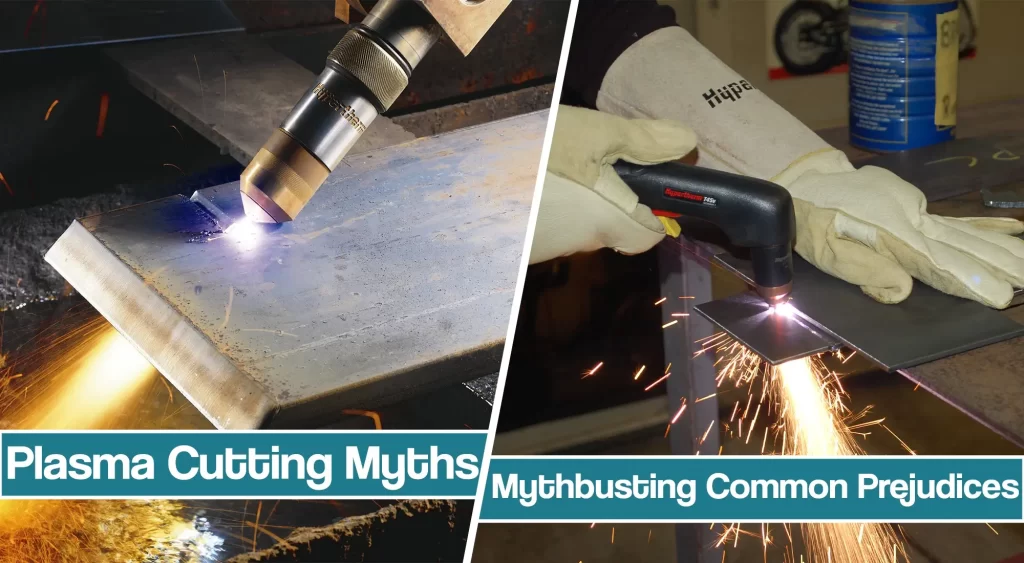
Mythbusting Common Plasma Cutting Myths
Myth 1: The Plasma Cutting System Is Expensive
Plasma cutting systems are higher priced than some other cutting tools, but there is a difference between price and cost.
Plasma systems’ fast cutting speeds and cut quality deliver productivity gains that save time and money for operators. Faster plasma cutting speeds, without any preheating of the workpiece, allow them to complete jobs quickly

Better quality cuts, with less dross and better edge conditions, mean fewer labor-intensive finishing operations are required. And, because most handheld plasma systems run off of compressed air (in contrast to oxy-fuel cutting), costly cylinder rentals and delivery charges are eliminated.
Cost is one reason that many companies switched from oxy-fuel to plasma. There’s no question that they are saving money by using plasma. They used to pay a lot for gas, but with plasma, companies are saving that money and at the same time, provide a safer working environment since there is no risk of gas leaks.
Of course, these gains are only realized when using a high-quality plasma system. Today, many low-price, low-quality plasma models are available. The low price may make these models look like a good deal – especially in a down economy – but ultimately the poor design, poor workmanship and outdated technology will disappoint operators, who may not see the productivity gains and cost savings that they expected.
Myth 2: Plasma Can Be Used To Cut Thin Materials Only
This may have been true 20 years ago, as some early handheld plasma systems did not meet operators’ expectations for performance on thicker material. And, plasma does offer some distinct advantages over oxy-fuel cutting on thin materials – like a smaller heat-affected zone and less warping.
But, as plasma technology has advanced, the notion that plasma is only for use on thin materials has become outdated. Indeed, today’s best plasma systems are “not your father’s plasma cutters.”
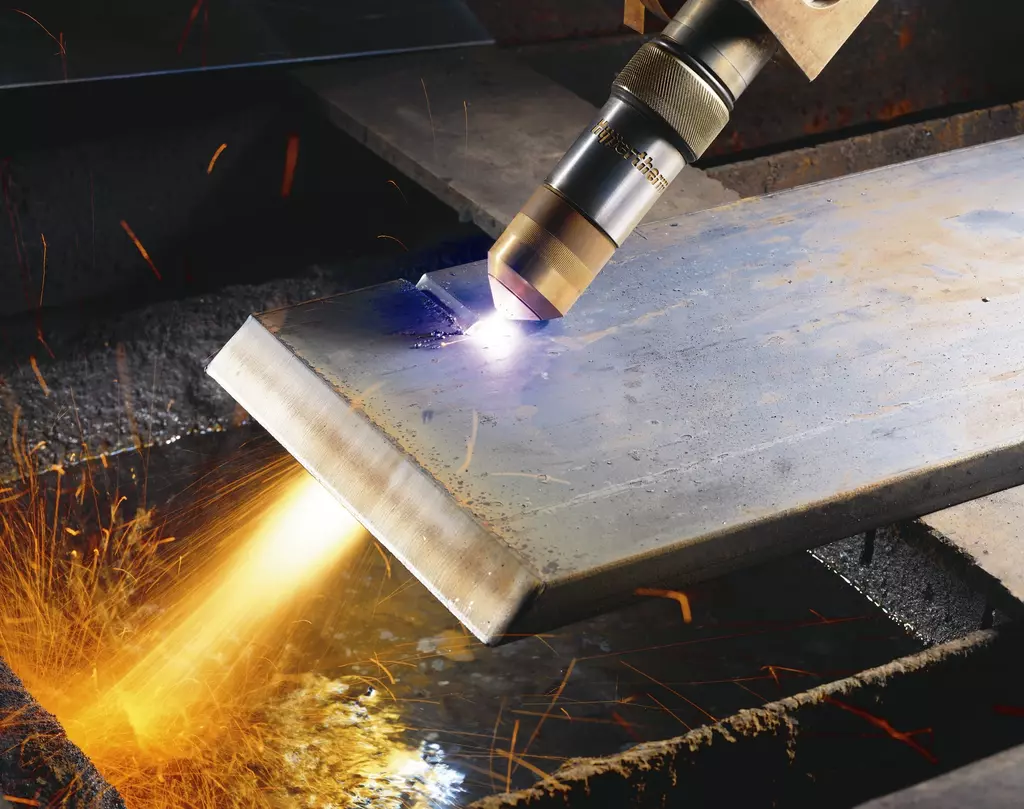
Advances in the design of torches, consumables, and power supplies have allowed plasma engineers to deliver systems that provide more cutting power and thicker cutting capacity – as much as 1.75 in. (44 mm) or more – even as system sizes have shrunk and duty cycles have climbed.
The outdated belief that plasma is only for use on thin materials causes too many operators to reach for their oxy-fuel torch to cut thicknesses for which a plasma cutter would deliver faster cutting speeds and better cut quality. Not using plasma through the tool’s full specified cutting range limits the productivity gains and cost savings that might be achieved.
Myth 3: Plasma Is Aimed At Cutting Stainless Steel
Many plasma system users purchase their first plasma system to cut stainless steel, aluminum or other nonferrous metals. Some operators continue to believe that plasma can only be used on these materials. In truth, plasma is effective at cutting any electrically conductive metal and is actually one of the world’s most common methods for cutting mild steel.
Of course, plasma’s ability to cut stainless steel and aluminum is one of its primary advantages over oxyfuel cutting, which is not effective on these materials.
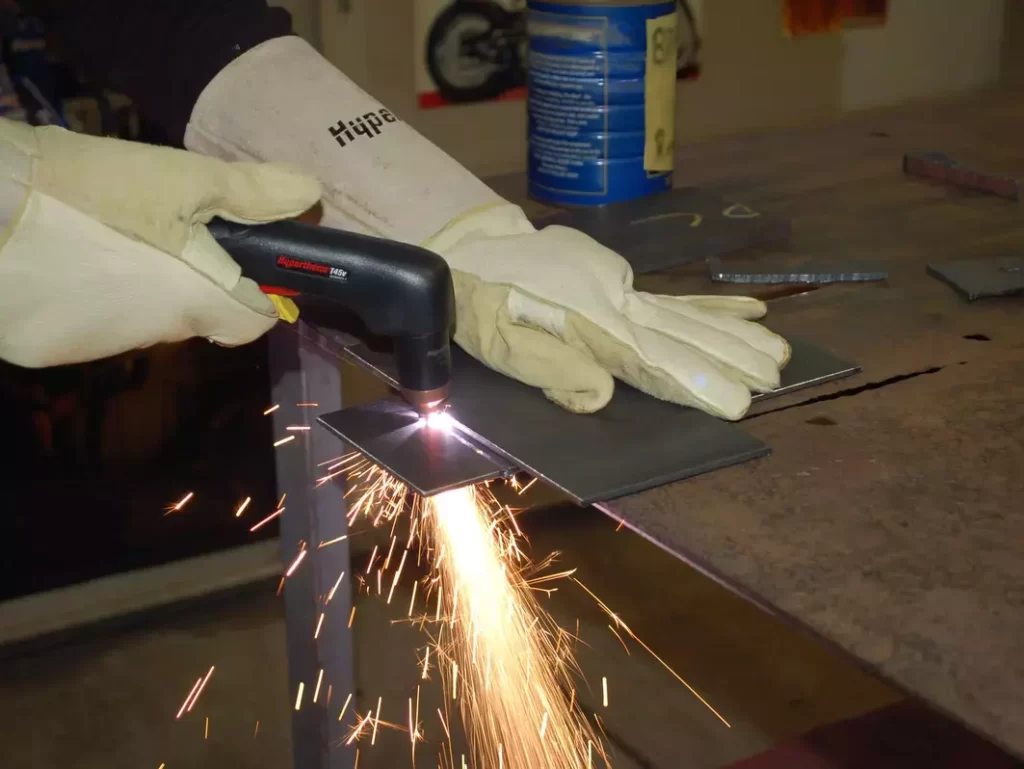
Plasma is also more effective at cutting painted, dirty or even rusted steel, which makes it an indispensable tool for heavy equipment repair, automotive restoration, farm equipment maintenance, and many other tasks.
Myth 4: Plasma Is Used Only For Cutting
Plasma systems are highly versatile cutting tools. Plasma systems cut, pierce and bevel electrically conductive metals of all types, shapes, and sizes.
With a simple change of the torch and/or consumables, some plasma systems can switch between hand cutting and automated cutting.
Plasma systems also can be used on X-Y cutting tables; on robotic arms; with a track burner for effective long, straight cuts; or with pipe cutting and beveling tools.
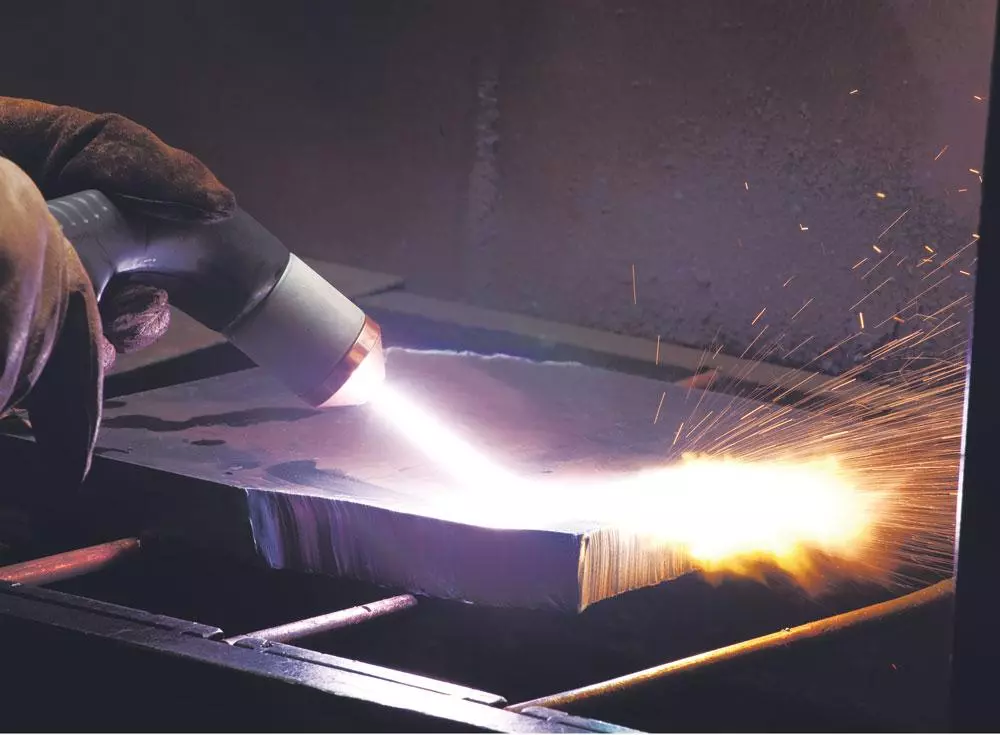
But, beyond cutting, some plasma systems – including small, portable systems like Hypertherm’s Powermax45 – are also very effective gouging tools. The Powermax45’s Conical Flow™ consumables deliver high-quality cuts quickly and significantly extend consumable life, which increases productivity and reduces operating costs. The system is recommended for use on metals of varying thickness, from gauge up to ≤0.75 in. (19 mm), but it will sever metals that are 1 in. (25 mm) or thicker.
With the Hypertherm plasma system, you can cut and gouge – with either a hand torch or a machine torch – mild steel, stainless steel, aluminum, and other electrically conductive metals. It incorporates numerous features that make it a good choice for mobile or job-site applications. The unit is portable, power-efficient, and uses a proprietary Boost Conditioner™ circuit that improves performance on low-line or fluctuating input power, including on motor generators.
Well-designed features make the Powermax45 easy to use. It uses patented nozzle-shielding so the operator can place the torch head directly on a workpiece and “drag cut” without holding a standoff. The simple control panel requires few adjustments and its light weight make it easy to bring the system right where it is needed.
For some customers, their plasma system is primarily a gouging tool, with cutting as a secondary function. And for good reason, as plasma systems are perceived to offer benefits – including less smoke and less noise – not matched by other gouging methods. Some common plasma applications include back-gouging for weld preparation and gouging out worn or cracked parts for repair or replacement.
By using their plasma systems to gouge as well as to cut, operators derive greater value from their system and more rapidly realize a positive return on their investment.
Myth 5: Plasma Cannot Be Used In The Field
Plasma systems require power and a gas source to operate, which implies that plasma can be used only in a production facility, shop, or other location where fixed power and air are readily available.
But, today’s leading plasma cutting machines incorporate technology that enables them to deliver full performance when running off an appropriately sized motor-generator, combined with a portable air compressor or compressed air tank.
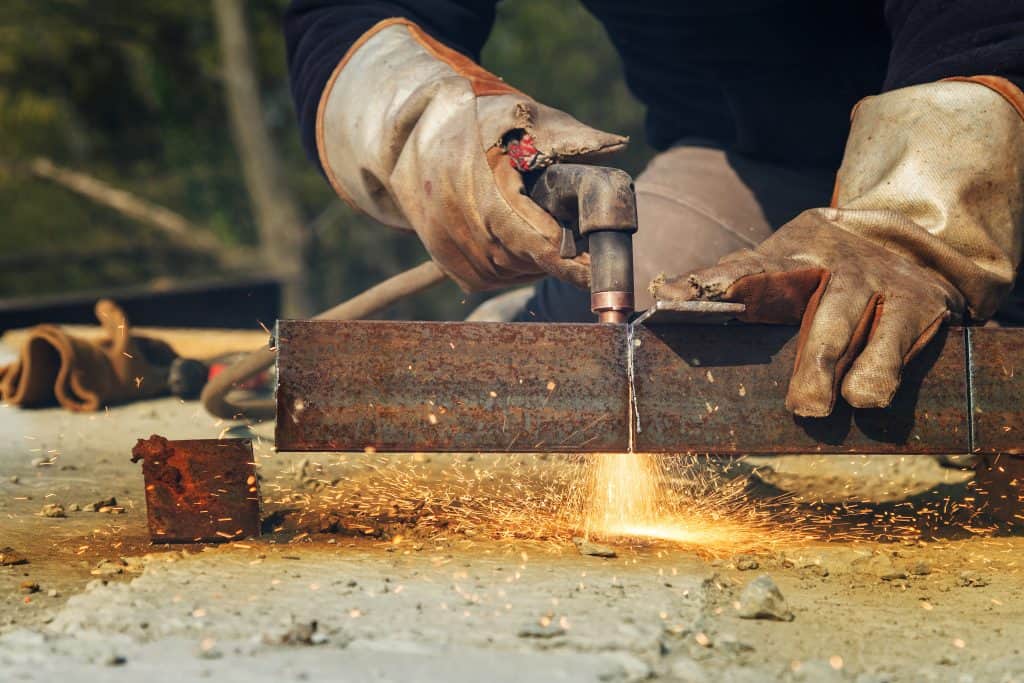
And, the small size and light weight of the latest inverter-based plasma systems make them easy to transport from the shop to the field. Note, too, that taking systems that run on compressed air into the field does not require transporting flammable gases such as those required for oxyacetylene cutting.
Myth 6: Plasma Cutting Can Be Challenging To Use
While the underlying technology of a plasma cutting system may seem complicated, using today’s advanced plasma cutters is not. Even a first-time plasma cutter can achieve good quality results within minutes of picking up a plasma torch for the first time.
With air plasma systems, there are no gases to regulate, and with features like nozzle shielding, operators do not need to hold a standoff.
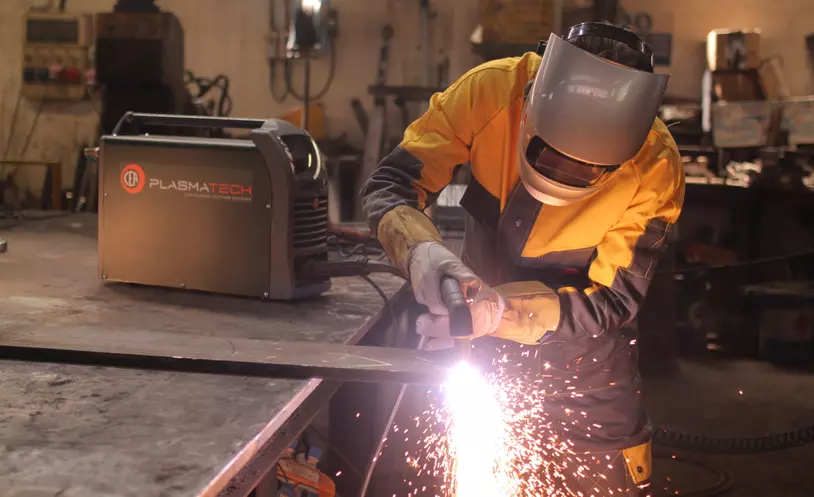
Lack of a standoff makes cutting easier as operators can drag the tip of the torch directly along the workpiece, and they can use pre-cut templates, too. Ergonomically designed torch handles and quick-connect torch leads further enhance ease of use.
Getting started with plasma is easy. Systems like the Powermax45 are supplied with nearly everything an operator needs to get started – the power supply, torch, consumable parts for cutting and gouging, and step-by-step operating instructions in print and DVD format. The operator needs to supply only the power, gas (clean, dry compressed air or nitrogen), and protective hand and eyewear.
The importance of these ease-of-use features cannot be underestimated, given the high rate of operator turnover and lack of skilled welders and cutters in many regions.
Summary
Like many misconceptions, some impressions about plasma’s capabilities are rooted in beliefs that once were– but no longer are – true. Today’s best plasma systems offer many advantages over earlier generations of plasma tools, as well as many benefits versus other methods of cutting and gouging metal.
Plasma systems from Hypertherm and other top brands are productivity-enhancing tools that require little training, are inexpensive to operate, and can be used for cutting and gouging various materials at various thicknesses, whether in the shop or in the field.





